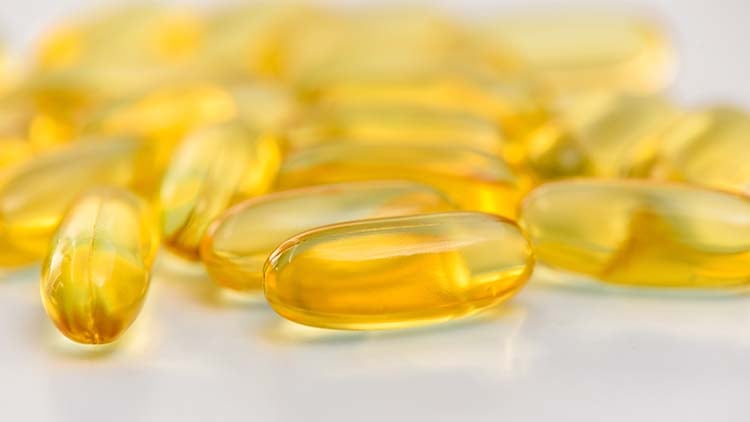Consumers’ health awareness has exploded since the outbreak of COVID-19, as evidenced by the growing demand for health products and services, with perceptions of health becoming more multi-dimensional, ranging from 'individual health' to 'social health' and 'environmental-friendly'.
It is worth noting that an increasing number of consumers are becoming more concerned about 'ingredients', reflecting changes in consumer needs and habits. Today’s consumers have more clearly defined health needs, such as eye care and anti-aging.
The global market for eye health products recorded a CAGR of 5.7% over the past eight years from 2014 to 2022.
Due to a global aging population and the prevalence of eye-related disorders, major and regional manufacturers and government agencies are actively trying to raise awareness of eye health. The use of eye health products, such as supplements, is an efficient way to treat eye issues that arise with age.
As a result, the global market for eye health products is likely to outpace the previous period, growing at a CAGR of 7.3% to reach US$4.7Bn by 2030.1
As people become more aware of lifestyle diseases, they are adopting healthy lifestyles and striving to improve their dietary habits, which boosts the demand for natural antioxidants. Antioxidant-rich foods may lower the risk of a variety of diseases, including heart disease and certain cancers. Natural antioxidants scavenge free radicals from bodily cells, preventing or reducing oxidative damage.
The global natural antioxidants market size grew from $2.31 billion to $2.52 billion between 2022-2023 at a CAGR of 9.3%. The global natural antioxidants market size is expected to reach $3.62 billion in 2027.2
In terms of consumer needs for eye health consumers want the right remedy to meet their needs. As a natural antioxidant ingredient, beta-carotene can be adopted.
β-Carotene is a type of carotenoid widely found in green plants, algae, and fungi. It was first isolated from carrots in 1831 by Wackenroder, who named it carotene. As one of the most common and stable pigments in nature, it is an essential source of vitamin A in human and animal bodies. One molecule of β-Carotene can be decomposed into two molecules of vitamin A, and hence it is called provitamin A. It is equipped with the function of coloring and enhancing color, as well as the active function of vitamin A, known as food functional pigment.
In 1907 Willstatter and Mieg calculated the empirical formula C40H56 for β-Carotene, molecular weight 536.88. The structure of beta carotene is shown in Figure 1 below.

Figure 1: β-Carotene structural formula
According to the above structural formula, β-Carotene, as a polyunsaturated olefin polymerized by 8 isoprene, contains 11 conjugated double bonds and two violonone rings, with a geometric center symmetric structure. All-trans structure is dominant in nature, accompanied by four common mono-cis-isomers, i.e., 9-cis-, 11-cis-, 13-cis-and 15-cis- respectively, which mostly exist in natural sources.
There are two main sources of β-Carotene, one being a chemical synthesis source and the other being a natural source.3 Two typical synthetic pathways exist for chemical synthesis, i.e., the Roche route characterized by the acetylene glia reaction and the BasF route characterized by the Wittig reaction.
Natural sources are divided into three kinds: green plant extraction method; salina method; and microbial fermentation method, as well as numerous steps of chemical synthesis. In order to accelerate the reaction speed and increase the yield of the target product, a large number of chemical reagents and catalysts are adopted in the process. Due to the organic synthesis reaction, there are abundant side reactions, which makes it difficult to separate, purify and remove harmful substances in the later stage.4 From the perspective of raw material cost, extraction technology, product purity, production condition control, safety, and reliability, microbial fermentation is an ideal industrial production method for β-carotene, and has been adopted by CABIO.
With the development of microbial technology, it is more and more important to produce β-Carotene by the fermentation of Blakeslea trispora, which is a high-yielding β-carotene fungus. The production process of Blakeslea trispora fermentation is shown in Figure 2.

Figure 2: Schematic diagram of the microbial fermentation process
β-Carotene is an important source of vitamin A in humans and animals.5 Vitamin A is a fat-soluble vitamin that maintains normal visual function and has antioxidant properties.6 contains multiple conjugated double bonds, which are easy to oxidize and have reducibility. In the presence of light, heat, oxygen, and active free radical ions, β-Carotene readily reacts with free radicals and effectively remove free radicals in the body, thereby protecting the body from free radical damage. Hence, it also plays an important role in alleviating skin oxidation.7
CABIO-BC products are mainly divided into the following types:
1. CABIO-BC microcapsule powder. The natural β-Carotene crystals prepared by biological fermentation of the filamentous fungus Blakeslea trispora were adopted to produce the powder form through the microencapsulation process.
2. CABIO-BC 30% oil suspension. An oil rich in evenly dispersed β-Carotene microcrystals. Dark red to brownish red. A thick, oily liquid. Total β-carotene content (C40H56) ≥30.0%.
3. CABIO-BC crystal. More than 96% crystals or powder, natural beta-carotene crystals prepared by biological fermentation of the filamentous fungus Blakeslea trispora.
With continued advances of human food safety and healthy nutrition levels, the function of β-Carotene will continue to be excavated, together with the expansion of its application field and the emergence of a variety of β-Carotene products. Therefore, the demand for β-Carotene is expected to increase, particularly that from natural sources. CABIO–BC’s three products based on microbial fermentation will also make a contribution to human nutrition and health.
References
1. Eye Health Products Market Outlook (2022-2033). Persistence Market Research.
3. Namitha, K.K.; Negi, P.S. Chemistry and biotechnology of carotenoids. Crit. Rev. Food Sci. Nutr. 2010, 50,728–760.
4. Stahl, W.; Sies, H. Bioactivity and protective effects of natural carotenoids. Biochim. Biophys. Acta 2005, 1740,101–107.
5. Jomova, K.; Valko, M. Health protective effects of carotenoids and their interactions with other biological antioxidants. Eur. J. Med. Chem. 2013, 70, 102–110.
6. Britton, G. Structure and properties of carotenoids in relation to function. F ASEB J. 1995, 9, 1551–1558.
7. Tapiero, H.; Townsend, D.M.; Tew, K.D. The role of carotenoids in the prevention of human pathologies. Biomed. Pharm. 2004, 58, 100–110.






